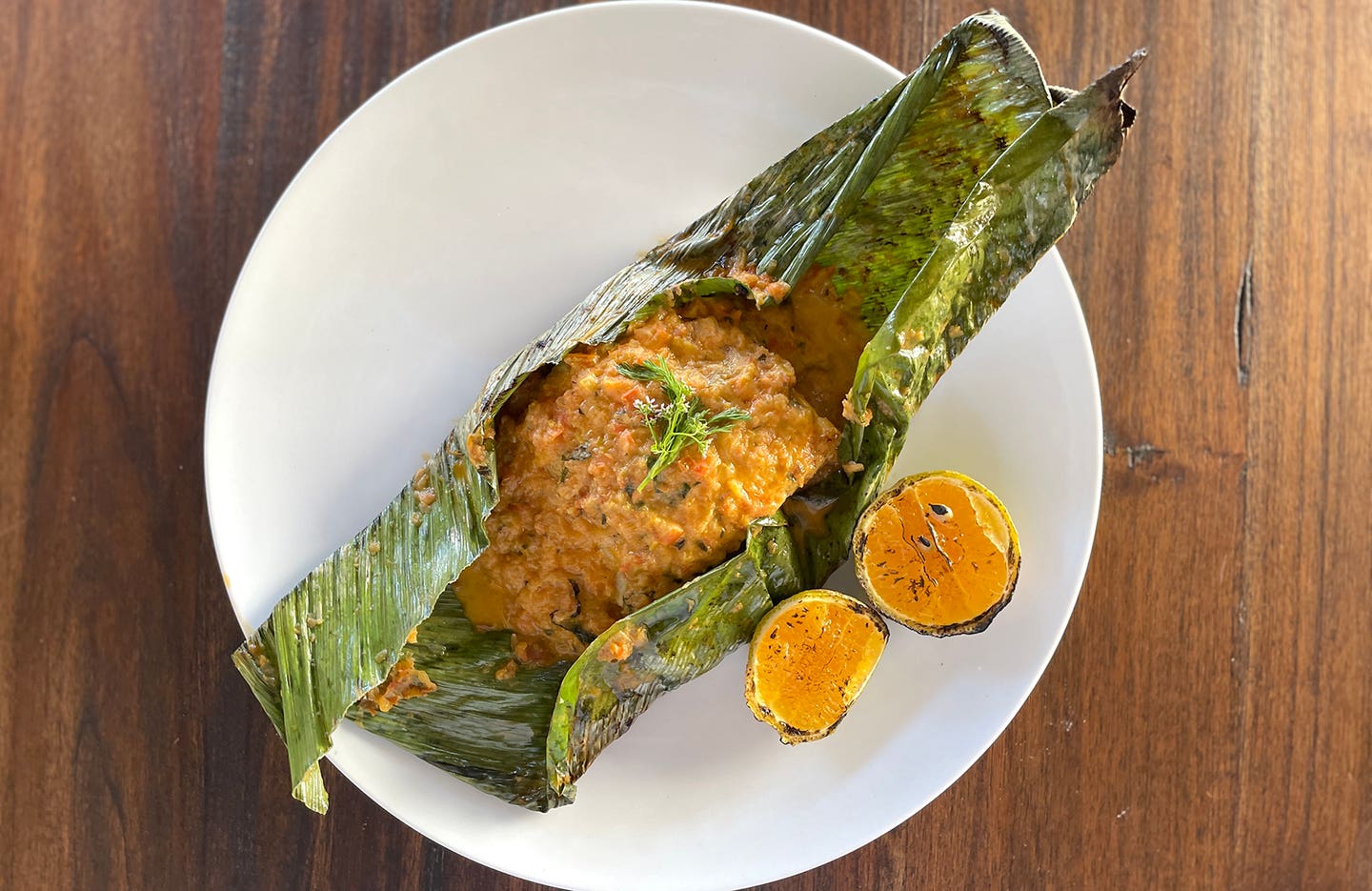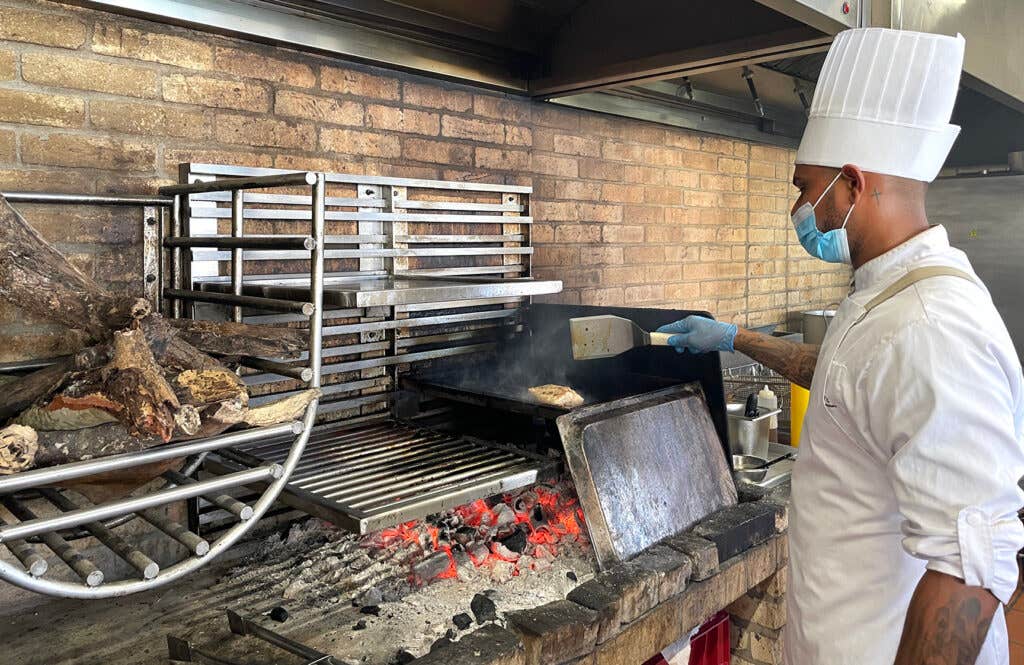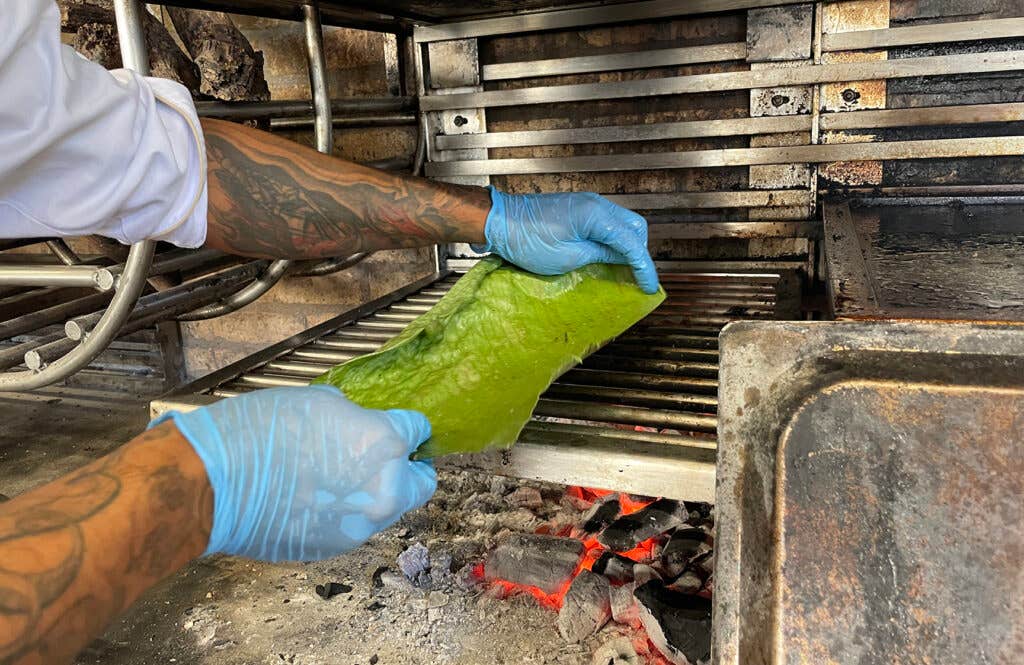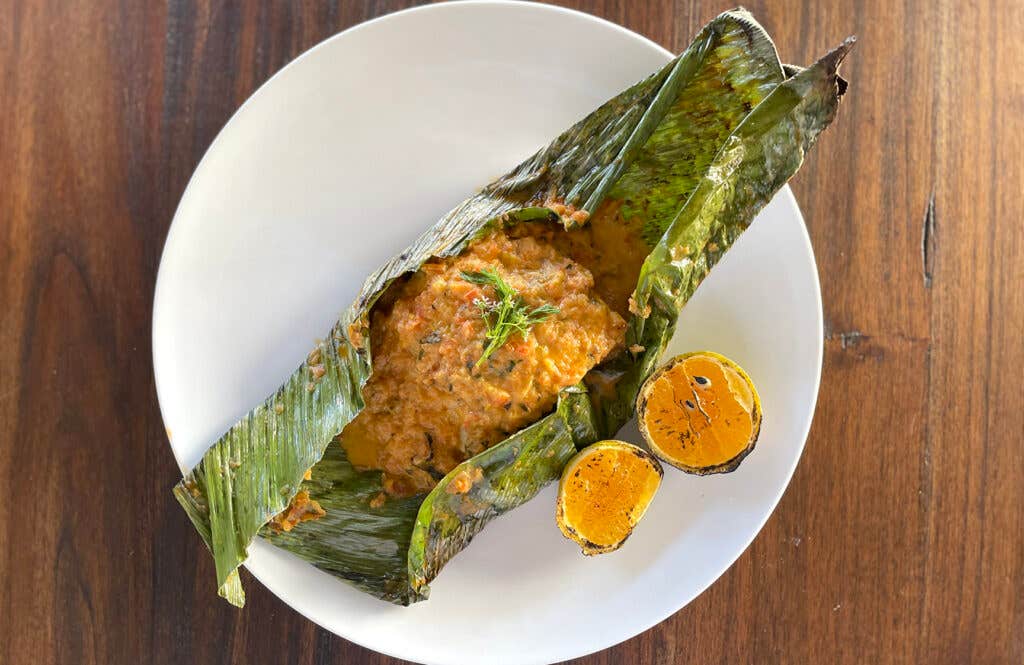
One Chef’s Spin on the Colombian Tamal—Inspired by the Caribbean Coast
Her recipe celebrates Cartagena’s regional flavors and abundant seafood.
The tamal has many faces across Colombia, with different parts of the country incorporating particular starches, proteins, vegetables, and seasonings into their renditions of the leaf-wrapped dish. Chef Alejandra Cubillos González, who was born and raised in Bogotá, grew up eating tamal santafereño, a variety typical of the capital region that usually includes pork, chicken, peas, carrots, and cornmeal, all bound up tightly in wrapped banana leaves. Every year at Christmas and the New Year, her grandmother, who ran a restaurant and cooked all her life, would prepare the dish for the whole family, with relatives helping assemble and wrap each tamal.
After González became a chef herself and began developing recipes for the menu at Sofitel Barú Calablanca's Bahía Restaurant in Isla Barú, a former peninsula accessible from the port city of Cartagena, she wanted to represent her native country’s knack for cooking foods wrapped in natural fibers. She also wanted to highlight the local cuisine, which was so different from that of her home region—especially in its bounty of fresh fish.

It was in Cartagena that González first began to cook fish regularly, especially locally abundant varieties such as horse mackerel and various snappers she had rarely encountered before. “Being close to the sea, I can be more connected with local fishermen, learn from them, and discover other types of food,” she says. “They advised me in the best method of cooking for each variety—fried, roasted, or with some sauce.”
To encapsulate some of her new home city’s quintessential foodways in a single dish, González decided that a tamal-inspired parcel would be a great vehicle for showcasing a delicate cut of local corvina. Further drawing on the coastal region’s specialties, she dreamed up a tomato-and-coconut-milk-based sauce—somewhat reminiscent of cazuela de mariscos, or seafood stew, one of Cartagena’s representative dishes—to pour over the fish. A common ingredient in Colombia’s coastal regions because of how plentiful it is, coconut “gives us flavor, moisture, and natural fat that lends texture and aroma,” González explains, adding that the milk also balances out the acidity of the tomatoes.

She wraps the fish and sauce in plantain leaves to “protect the ingredients we have chosen,” noting that the natural fibers concentrate the flavors within and preserve the integrity of the fillings as the dish steams. The leaves also impart their own subtly herbaceous and mildly bitter fragrance into the fixings. González further enhances the aroma by heating the leaves over hot coals prior to wrapping, to infuse them with smoky flavor and also improve their pliability.
“Wrapping dishes in banana leaves was a tradition of our ancestors,” she explains. (“The whole reason for wrapping food, of course, originates in the need to transport it,” according to Mariana Velasquez, author of the cookbook Colombiana: A Rediscovery of Recipes and Rituals from the Soul of Colombia. “In these little packets, you have a full meal.”) Traditional tamal recipes generally include starches like rice, and meats like chicken or pork, but González believed in the versatility of the technique. “To bring it into the present, we decided to apply this wrapping technique to the fish.”
In the kitchen at Bahía, González opens up the leaves slightly before serving, so that the fillings peek out and aromatic steam billows from the unwrapped parcel. Diners can dig in right away, no unpacking required. Cartagena’s penchant for coconut appears again in the bowl of fragrant coconut rice served alongside the leaf-cradled tamal. And leaves aren’t the only part of the banana on the table: the meal comes with a helping of plantain chips to nibble on while looking out over Barú’s white-sand shoreline and azure waters.
“Through this dish, we pay homage to our traditions and to our ingredients,” says González. “The person who tastes this fish can take a trip through their palate.”
Recipe

Keep Reading
Continue to Next Story










